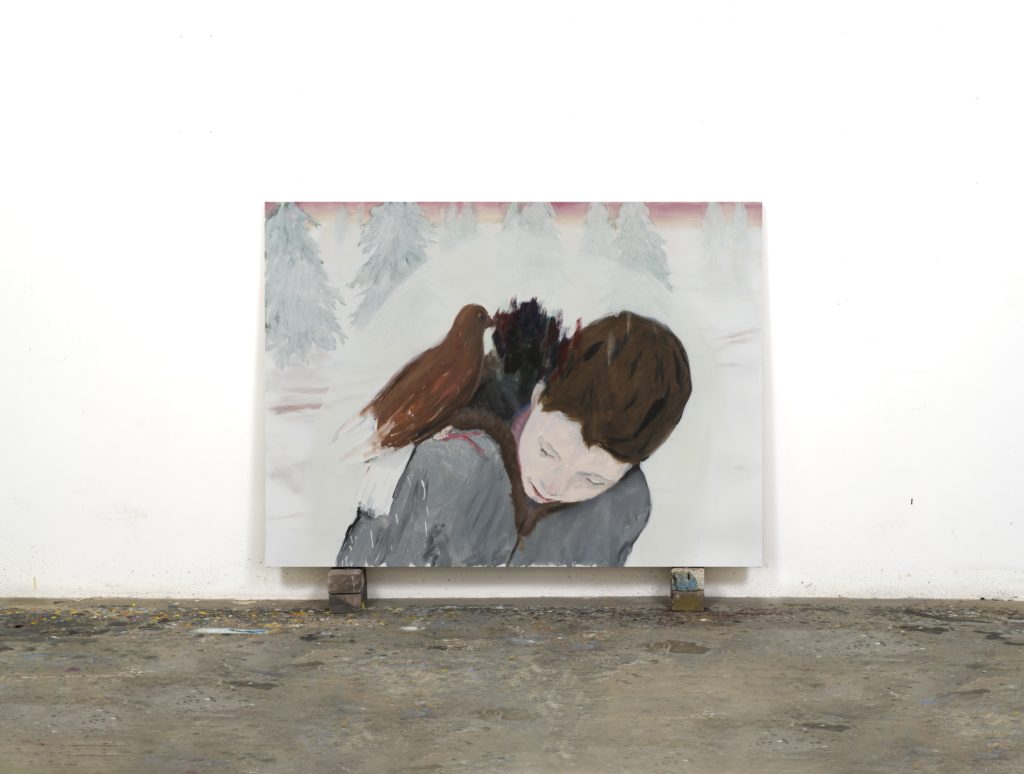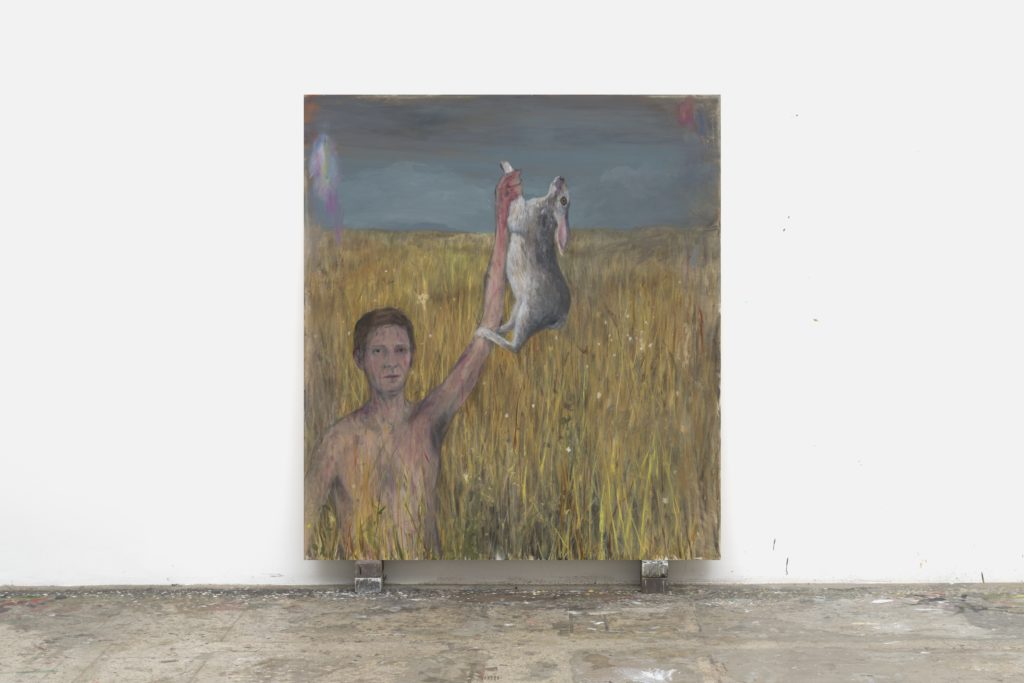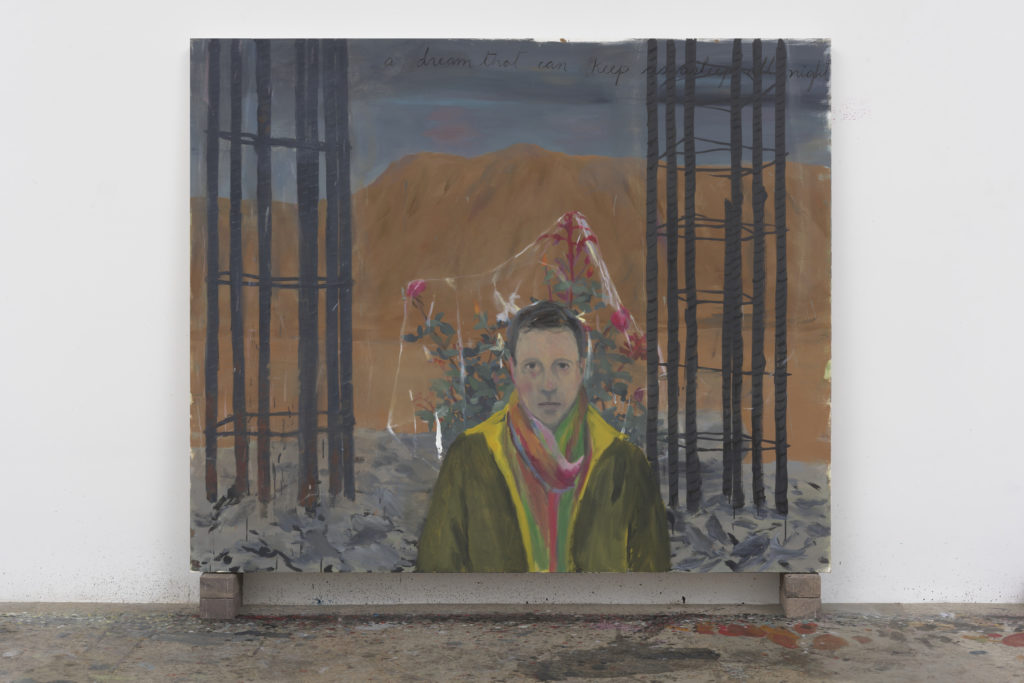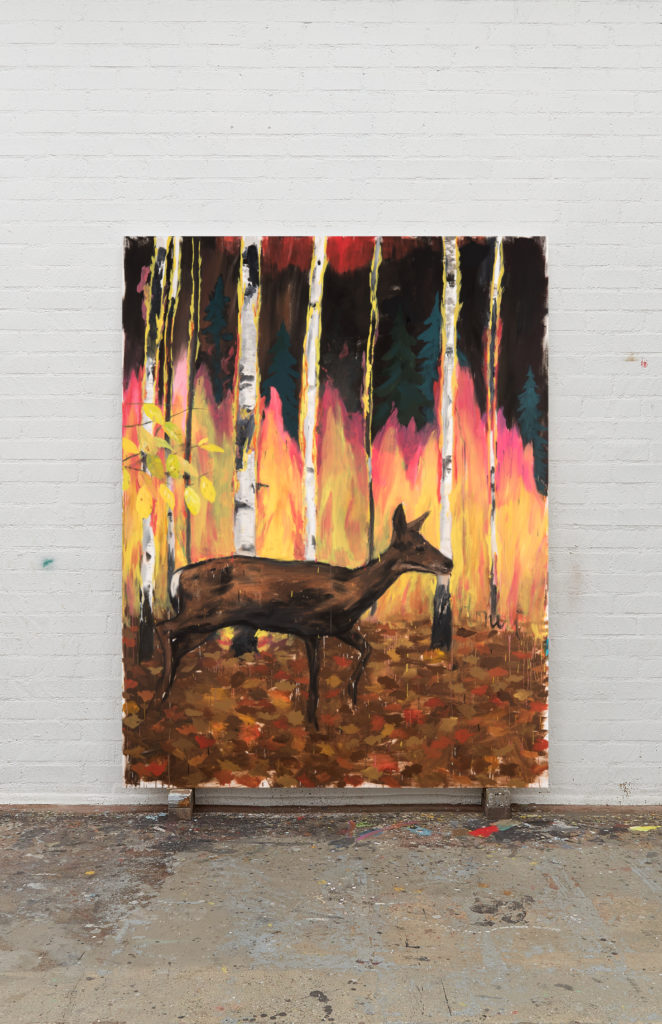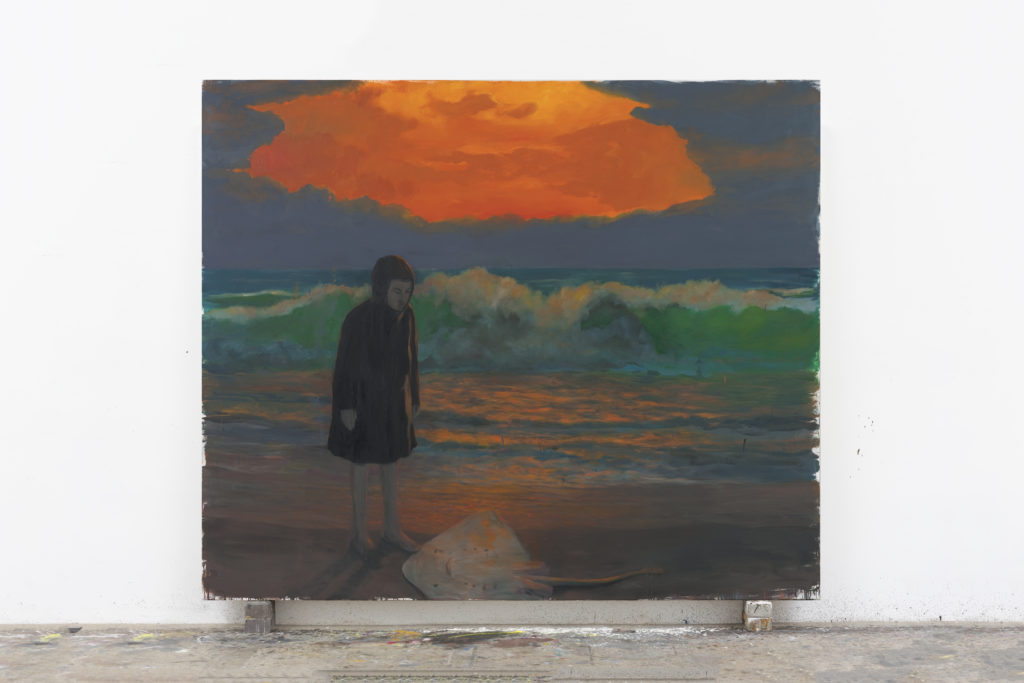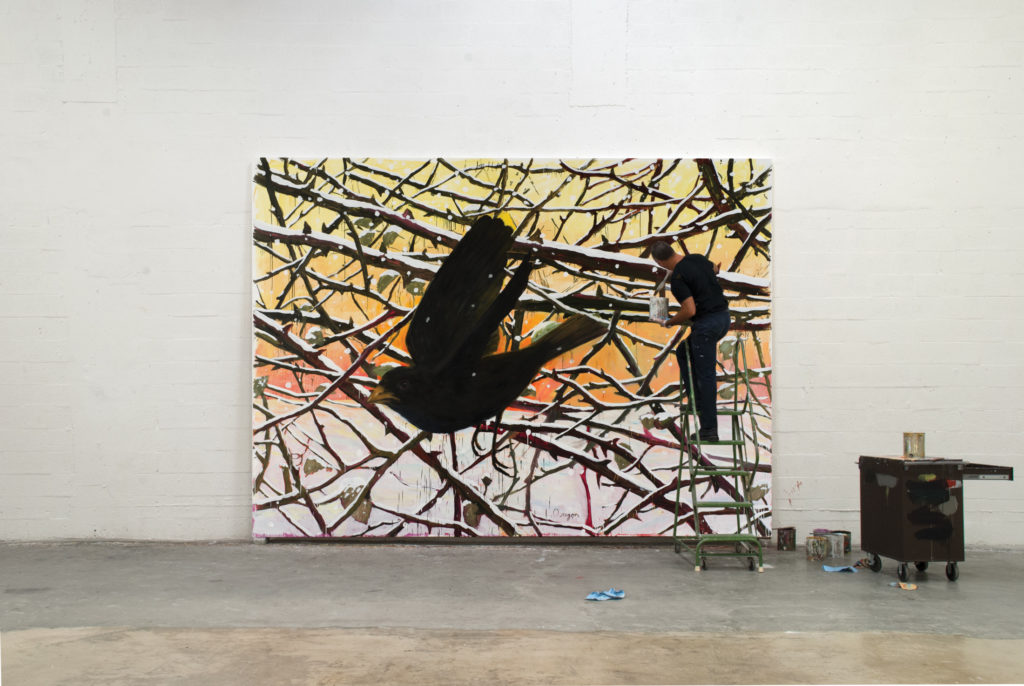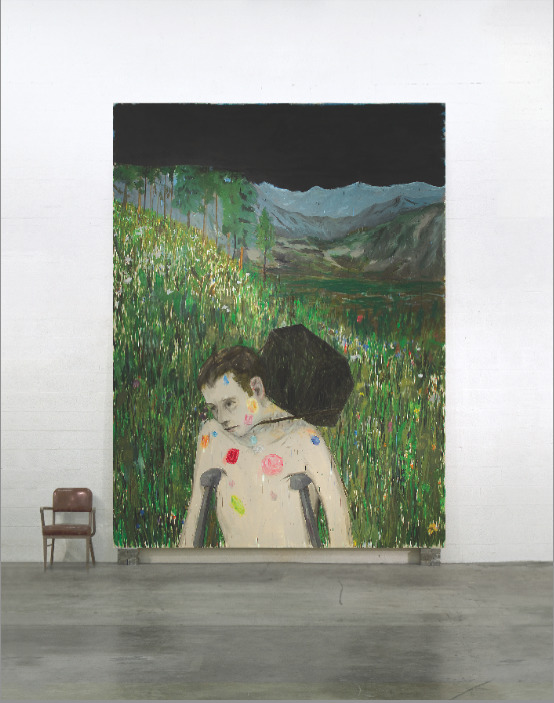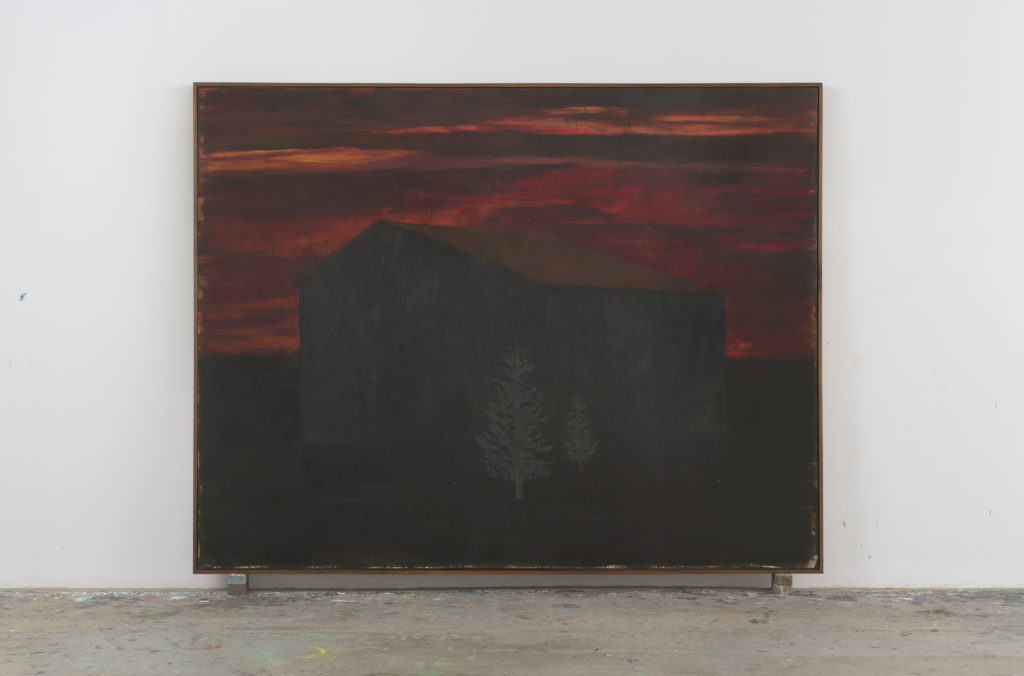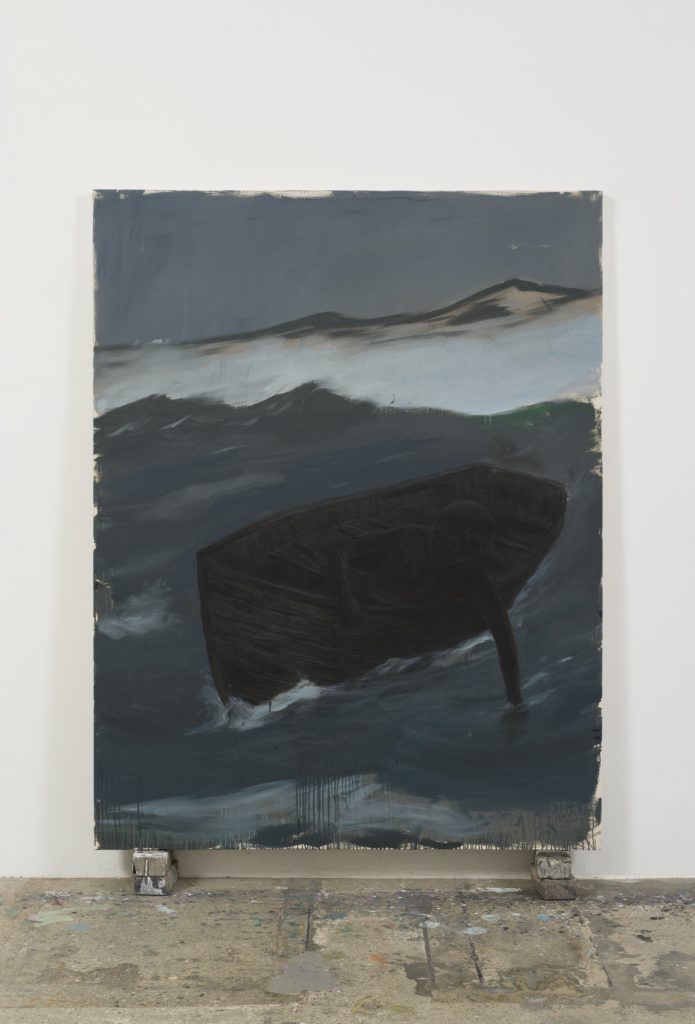I was standing in the viewing room of Jack Shainman Gallery in front of a large painting by Enrique Martinez Celaya. The painting showed a shirtless adolescent boy holding up a dead rabbit. The figure was looking directly at me. I wanted to look and I wanted to look away. A second large painting depicted another boy (or man?) with similarly intense eye contact. There is something straightforward about Martinez Celaya’s work, something ultra-sincere, but there is also something reluctant, held back.
Martinez Celaya is prolific and has worked in an unusually broad array of media and disciplines (including writing and science). I think of him primarily as a painter and his recognizable voice is lodged less in the way he applies paint than in his chosen pictorial elements and how he puts them together. I made notes, a list of observations and I realized the paintings themselves have the quality of a composite, a list of details that piece by piece construct a whole. The list reads like the retelling of a dream:
There is a boy or young man.
He is looking directly at me.
He is wearing a colorful scarf.
He is standing in front of flowers wrapped in plastic…
”Dream,” I wrote down, not noticing until later studying photographs I had taken, that there were words written at the top of the large canvas: “a dream that can keep us asleep all night.” A dream is a psychological space in which sensory information is often reorganized, heightened or narrowed. The figures in the paintings are also dreamlike in the way they stare back, seemingly wanting to communicate but unable, mute.
In June I spoke with Martinez Celaya on a video call. I told the artist that the subjects in his paintings–often a lone figure but sometimes an animal or plant–are usually situated at a consistent and specific distance, not far, not close, what would be just out of physical reach of the viewer. I asked him if this sounded accurate and he said that he recognized what I was saying. “That is true, ” he said. “There is that distance and that is not a trivial matter.” He mentioned The Tempest by Giorgione.
You see the big tempest and you see the tiny little figure…I like it very much…I could never paint something like that where the landscape has that relationship to the figure, has that distance. It’s just out of my reach.
Out of reach was interesting phrasing and now I am wondering if he meant technical reach, emotional reach, or something else. He continued,
There are people who focus on, for instance, Lucian Freud, someone focusing on a very tight close-up observation of the body, so close that the body becomes material…I cannot do that either. [At the distance in my paintings] you feel both the commonality of the thing and the otherness of the thing, and the condition of whatever you are looking at, that feels almost mirror-like to me…The concerns I have exist in that near-proximity.
Along with this just out of reach, mirror-distance between viewer and subject, a unique figure-ground relationship is common in the artist’s paintings. Most of his subjects are positioned in the center of the picture plane surrounded by a surplus of negative space but not a great expanse. The background is namable–the ocean, a forest, a field–but not developed to a specificity of place or location. The main subject and background appear to have been rendered separately and remain separate, alien to each other. A feeling of unease rests between the viewer, the subject and their setting. These are lonely spaces that do not invite the viewer in nor do they engage the subject’s attention; the subject is often looking out at us. “You are alone here,” is what they seem to say to us or to themselves. “Where do you belong?”
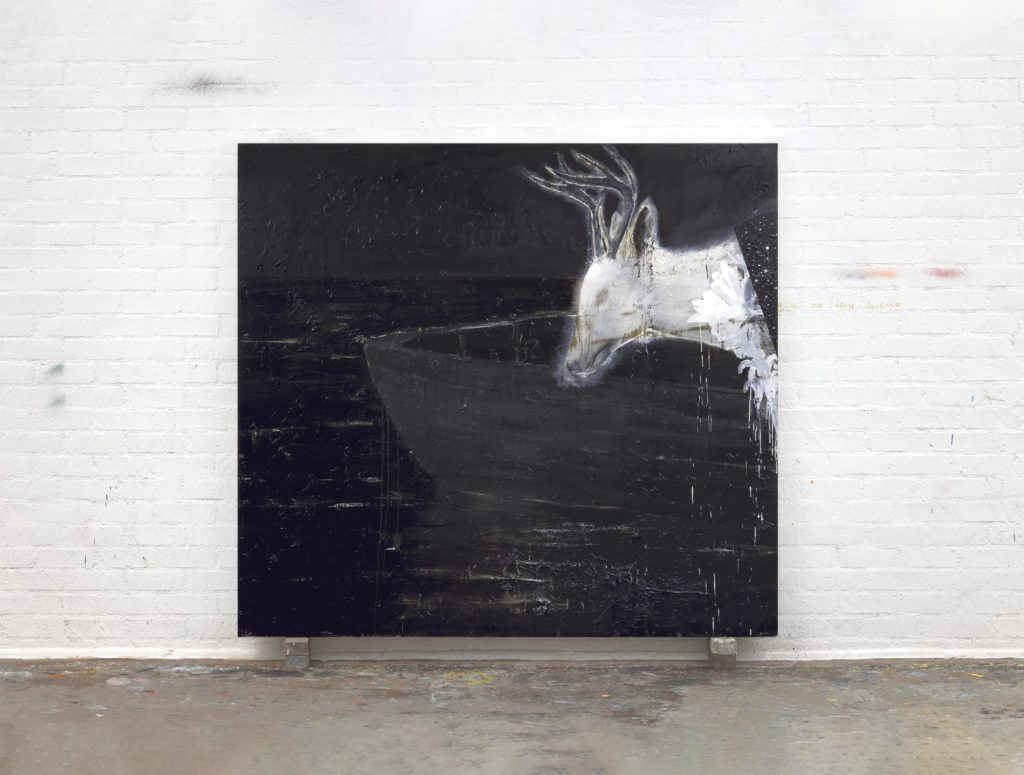
I told Martinez Celaya that my sense was that the subject seems to be blocking something in the background, obstructing something from view. The fact that the background takes up more (or less?) space around the figure than I would expect it to supports the idea that there is something is missing or I am missing something. Martinez Celaya said,
Do the subjects belong in this space? I have sometimes with myself debated whether the space, this background with figures, almost looks like a backdrop, almost as if they themselves don’t belong there either…Blocking is something I think about a lot. There is a sense of blocking. One is most conscious of that blocking, I think, when you look in the mirror…When you look in the mirror, every movement you [make] matches the movement of the blocking. You can’t get around it. And that mirror reflection is clearly a hole, a cutout in the world.
As the artist spoke I remembered being a child, looking in the bathroom mirror. When I unlocked my eyes from my own gaze, I lost myself. When I moved the mirror on the cabinet I could track myself but became disoriented. When I am looking at Martinez Celaya’s paintings, there is something childish in me that wakes up, a sensibility that is hyper-sensitive but kept in the dark.
The artist and I discussed painting as a kind of faith practice and like any faith practice it is almost impossible to describe in words. Martinez Celaya’s work is strident, confident, but it also touches on the frailty of being human, of being in the strange space of a dreamer. We discussed how self-doubt goes necessarily with the territory. Martinez Celaya said,
You’re out at sea and the more you know about painting the more willing you are to go farther and farther out. And then, regardless of how the sea starts out, when you get going with painting it’s always a storm…Five years go by and you maybe know a thing or two more about painting and now you go out more, farther away from the land, and you find yourself equally ignorant, equally unprepared for the task.
I asked the artist, “How do you feel when you are making art?”
The first thing that comes to mind, is that it’s the closest I come to dissolving the boundary of where I am. And the painting, my self and the world where we are, seem to have no strict separation…there is much more movement between them. Consequently, time also changes. Space changes. And time ceases to mean something.
